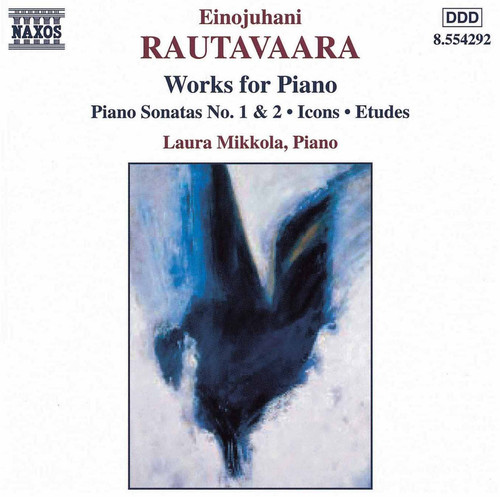Show results for
Deals
- 4K Ultra HD Sale
- Action Sale
- Alternative Rock Sale
- Anime sale
- Award Winners Sale
- Bear Family Sale
- Blu ray Sale
- Blues on Sale
- British Sale
- Classical Music Sale
- Comedy Music Sale
- Comedy Sale
- Country Sale
- Criterion Sale
- Electronic Music sale
- Fantasy Film and TV
- Folk Music Sale
- Hard Rock and Metal Sale
- Horror Sci fi Sale
- Jazz Sale
- Kids and Family Music sale
- Kids and Family Sale
- Metal Sale
- Music Video Sale
- Musicals on Sale
- Mystery Sale
- Naxos Label Sale
- Olive Films on Sale
- Page to Screen Sale
- Paramount Sale
- Pop and Power Pop
- Rap and Hip Hop Sale
- Reggae Sale
- Rock and Pop Sale
- Rock Legends
- Soul Music Sale
- TV Sale
- TV Sale
- Vinyl on Sale
- War Films and Westerns on Sale

Etudes Op 42 / Icons Op 6 / Preludes Op 7
- Format: CD
- Release Date: 7/20/1999

Etudes Op 42 / Icons Op 6 / Preludes Op 7
- Format: CD
- Release Date: 7/20/1999
- Label: Naxos
- UPC: 636943429228
- Item #: NAX342922
- Genre: Classical
- Release Date: 7/20/1999

Product Notes
This Naxos disc presents Laura Mikkola's performances of the solo piano works of Einojuhani Rautavaara. While not a complete survey, it does cover Rautavaara's most substantial solo piano pieces. The "Icons" (1955) were inspired by Orthodox iconography. Though not of the faith himself, Rautavaara was exposed to the Finnish Orthodox Church in childhood and it's comparative exoticness seems to have left a deep mark on him. These six pieces in a neoclassical style represent particular scenes of Orthodox iconography: "The Death of the Mother of God", "Two Village Saints", "The Black Madonna of Blakernaya", "The Baptism of Christ", "The Holy Women at the Sepulchre" and "Archangel Michael Fighting the Antichrist". There's a great diversity here, and it's not all solemn and meditative: the second and fourth pieces are as jolly as the player piano in a western. The remaining works were written over a decade later, at a time when Rautavaara was interested in the "grand style" of piano playing in the era of Liszt. The Piano Concerto No. 1 (hear Mikkola perform it on another Naxos disc) was marked by wide runs and palm clusters, and that same spirit is found in the Piano Etudes (1969) and Piano Sonata No. 1 (1969) and No. 2 (1970). The six Etudes follow the model of Debussy in focusing each on a different interval: "Thirds", "Sevenths", "Tritones", "Fourths", "Seconds" and "Fifths". The piano sonatas are both in two movements. The First is titled "Christus und die Fischer" and employs a bare minimum of material. The Second, which bears the title "The Fire Sermon", is it's polar opposite, with the first movement consisting of shifting clusters played very fast.

